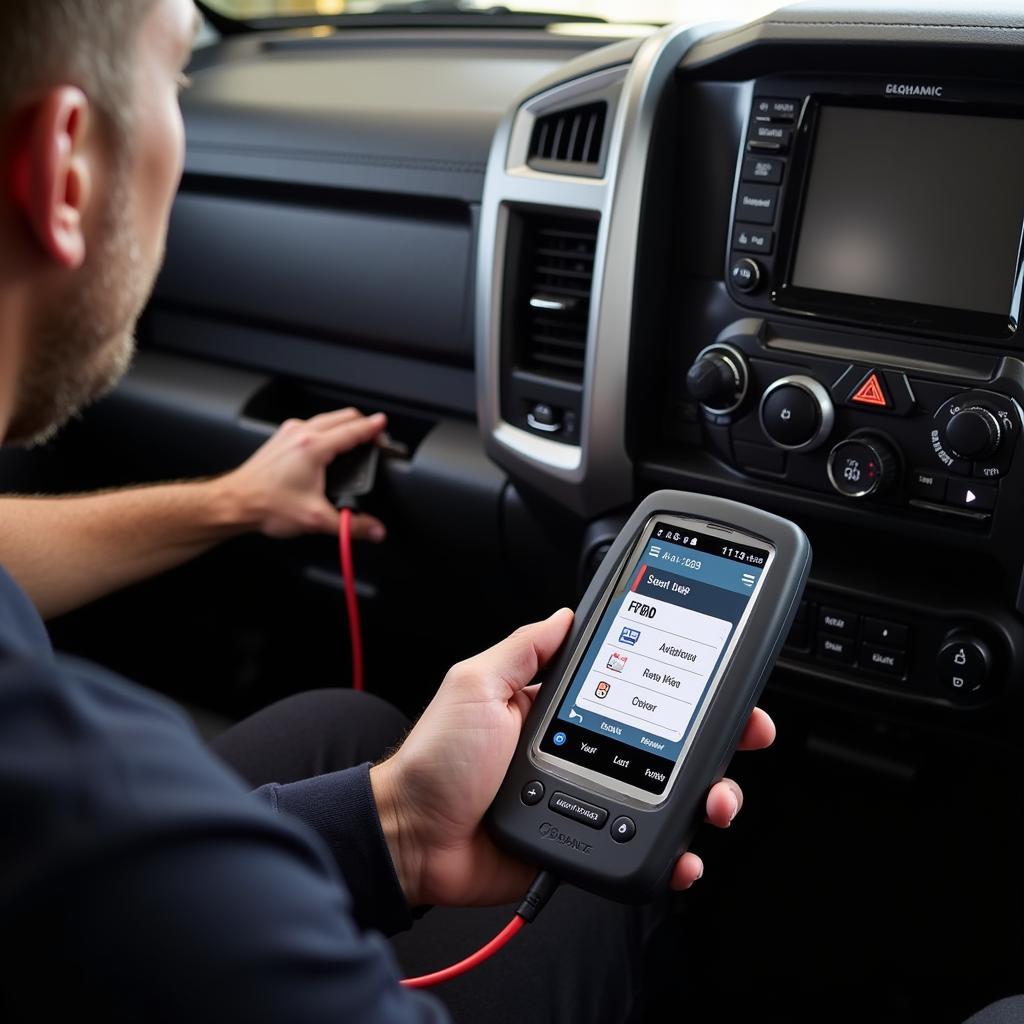Disabling the anti-theft system on your 2005 Mazda Tribute can be a tricky process, often needed for troubleshooting or after battery replacement. This guide provides detailed instructions and expert advice to help you safely and effectively navigate this procedure. Understanding the intricacies of your vehicle’s security system is crucial to avoid further complications.
Understanding Your 2005 Mazda Tribute’s Anti-Theft System
The 2005 Mazda Tribute’s anti-theft system, also known as the Passive Anti-Theft System (PATS), is designed to deter unauthorized vehicle operation. It uses a transponder chip in your key that communicates with the vehicle’s immobilizer module. If the system doesn’t recognize the key’s signal, it prevents the engine from starting. Sometimes, this system can malfunction, leaving you stranded. Knowing how to disable the anti-theft system, even temporarily, can be a real lifesaver.
Common Reasons for Disabling the Anti-Theft System
Several situations may necessitate disabling the anti-theft system on your 2005 Mazda Tribute. These include:
- Lost or Damaged Key: If you lose your programmed key or it gets damaged, the anti-theft system will prevent the car from starting. Disabling it temporarily might be necessary while you await a replacement key.
- Malfunctioning System: Sometimes, the anti-theft system itself can malfunction, preventing the car from starting even with a valid key.
- Aftermarket Alarm Installation: If you’re installing an aftermarket alarm system, you might need to disable the factory anti-theft system to avoid conflicts.
- Dead Battery: A dead battery can sometimes confuse the anti-theft system.
Methods to Disable the Anti-Theft System on Your 2005 Mazda Tribute
There are a few approaches you can take to disable the anti-theft system on your 2005 Mazda Tribute, but it’s important to proceed with caution.
- Using the Key: The simplest solution is sometimes overlooked. Try all your keys, including spares. Insert each key into the ignition and turn it to the “ON” position (without starting the engine) and wait for 10-15 minutes. Sometimes this allows the system to recognize the key and reset itself.
- Checking the Battery: Ensure your battery terminals are clean and securely connected. A weak or faulty battery can cause unpredictable behavior in the anti-theft system.
- Professional Reset: The most reliable method is to take your vehicle to a qualified Mazda technician or a locksmith specializing in automotive security systems. They have the diagnostic tools and expertise to properly disable or reset the system.
Cautions and Considerations
Disabling the anti-theft system should not be taken lightly. Here are some crucial things to consider:
- Security Risks: Disabling the system compromises your vehicle’s security, making it more vulnerable to theft. Only disable it temporarily and address the underlying issue promptly.
- Legal Implications: Tampering with the anti-theft system might have legal implications in some jurisdictions. Always consult a qualified professional if unsure.
- Further Damage: Incorrectly attempting to disable the system could cause further damage to the electrical system or the immobilizer module.
“It’s crucial to understand that bypassing the anti-theft system can create security vulnerabilities,” says automotive electrical expert, David Miller, ASE Certified Master Technician. “While temporarily disabling it for troubleshooting is sometimes necessary, always prioritize getting the system back online as soon as possible.”
Troubleshooting Tips
If the basic methods don’t resolve the issue, here are some further troubleshooting steps:
- Check Fuses: Inspect the fuses related to the anti-theft system and ignition. A blown fuse can easily disable the system.
- Visual Inspection: Examine the wiring around the ignition switch, steering column, and immobilizer module for any signs of damage or loose connections.
- Diagnostic Tools: Advanced diagnostic tools can help pinpoint the problem within the anti-theft system. A qualified technician can use these tools to identify faulty components or communication errors.
“Remember, a properly functioning anti-theft system is a vital part of your vehicle’s security,” advises Sarah Johnson, Automotive Security Specialist. “If you’re uncertain about any aspect of the disabling or resetting process, it’s always best to consult a professional.”
Conclusion
Disabling the anti-theft system on your 2005 Mazda Tribute can be necessary in certain situations, but proceed with caution and prioritize reinstating the system as soon as possible. Utilizing the key reset method or addressing battery issues are good initial steps. However, for persistent problems or complex situations, seeking professional assistance from a qualified Mazda technician or automotive locksmith is the safest and most effective way to resolve anti-theft system issues and ensure the long-term security and reliability of your vehicle.
FAQ
- Can I permanently disable the anti-theft system on my 2005 Mazda Tribute? Permanently disabling the system is not recommended due to security risks.
- What if my key is damaged? A locksmith or Mazda dealer can program a new key for your vehicle.
- How much does it cost to have a professional reset the anti-theft system? The cost varies depending on the specific issue and labor rates.
- Will disconnecting the battery disable the anti-theft system? Disconnecting the battery might temporarily reset the system but won’t permanently disable it.
- What is the PATS system? PATS stands for Passive Anti-Theft System, a common type of immobilizer system used in vehicles.
- Can a faulty ignition switch cause anti-theft system problems? Yes, a faulty ignition switch can trigger issues with the anti-theft system.
- Where is the immobilizer module located on a 2005 Mazda Tribute? The immobilizer module’s location can vary, but it’s often found near the steering column or beneath the dashboard. Consult your vehicle’s service manual for the precise location.

